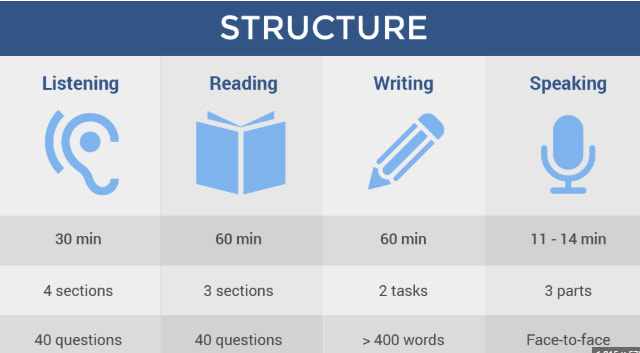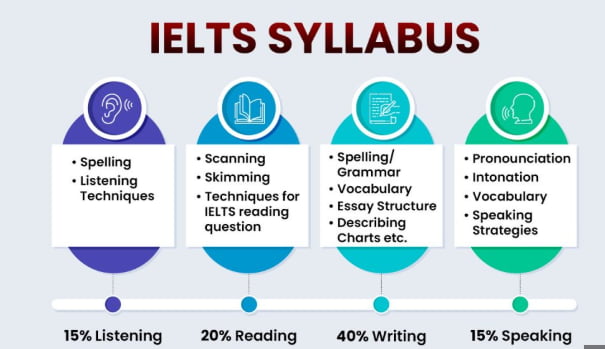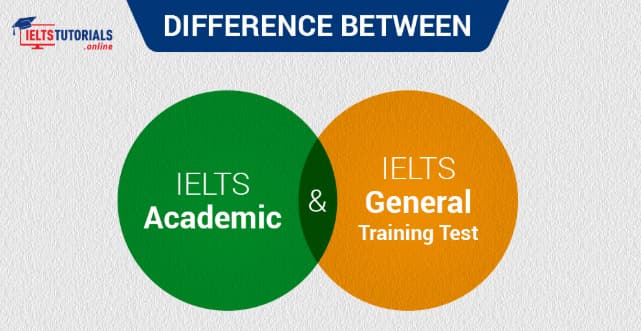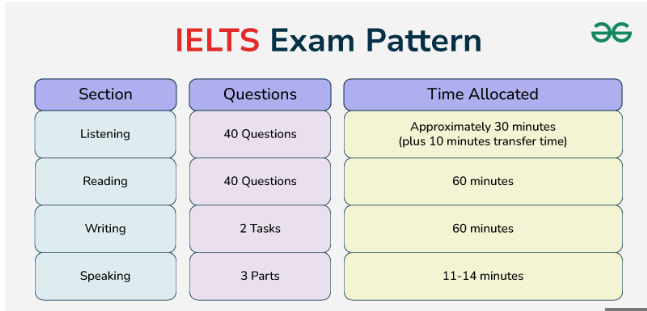Contents
You’re preparing to take the first step toward your dreams of studying at an international university, working abroad, or immigrating to a new country. But the IELTS exam, the key to that door, is its format, timeframe, and question types. Thinking about it makes your head spin, doesn’t it? Dozens of questions like, “How long is the listening exam?”, “What do they ask in the writing exam?”, and “Will I be speaking alone in the speaking exam?” Float through your mind. Calm down! If you haven’t read yet, we recommend reading a comparison of the TOEFL vs IELTS before returning.
In short, the IELTS is offered in two different formats: Academic and General Training. The Academic exam is suitable for university applications or those aiming for an academic career. The General Training exam is particularly preferred for immigration applications and situations requiring work experience. The Listening and Speaking sections are the same in both types, but the Reading and Writing sections differ in content.

The total exam duration is approximately 2 hours and 45 minutes. The Listening section lasts 30 minutes, while the Reading and Writing sections each last 60 minutes. The Speaking section ranges from 11 to 14 minutes and is usually administered on a separate day from the other sections of the exam. These timeframes require candidates to use their time effectively and develop specialized techniques for each section.
In this article, we will X-ray the IELTS exam for you, examining each section individually, using the most understandable and candid language. You’ll be surprised at how confident you’ll be entering the exam room when you know the exam format and timings like the back of your hand. Remember, defeating even the most formidable enemy becomes easier when you know them. Let’s start getting to know our enemy better!
First Stop: Listening Section – Keep Your Ears Open!
The first section of the IELTS exam, the Listening section, lasts approximately 30 minutes, and you’ll have an additional 10 minutes at the end to transcribe your answers onto the answer sheet. So, it’s a 40-minute marathon in total. Your goal in this section is to capture specific information from the English audio recordings you listen to. These recordings can contain a variety of accents (British, American, Australian, etc.), so it’s crucial to familiarize yourself with different accents. The exam consists of four separate sections, each with varying difficulty levels and formats, and a total of 40 questions.

- The first two sections typically involve conversations related to social and everyday life. For example, in the first section, you’ll listen to a telephone conversation between two people (such as a hotel reservation or course registration). In the second section, you’ll typically listen to an introductory text spoken by a single person (such as a museum guide or a radio announcement). These first two sections are generally the easier and more straightforward parts of the exam. You’ll encounter question types like fill-in-the-blank and matching.
- The third and fourth sections focus on academic topics and are generally more challenging. In the third section, you’ll typically listen to a dialogue between two or more people discussing an academic topic (a paper, a project, etc.). This section tests your ability to follow different ideas and arguments. You may encounter more complex question types, such as multiple choice questions and opinion matching.
Don’t Forget to Take Notes!
The fourth section is considered the most challenging part of the exam and typically involves a long monologue taken from a university lecture or conference. In this section, you’re expected to follow detailed information about an academic topic and grasp the main ideas. Questions are typically asked in a summary-completion or note-completion format. Because the audio recording continues uninterrupted in this section, you must maintain maximum concentration.
Remember, you only have one chance to listen to each audio recording in the Listening section! Therefore, it’s crucial to quickly read the questions before the audio begins and understand the information you’re looking for. You can take notes directly in the question booklet while listening and transfer them neatly to the answer sheet within the 10-minute time limit provided at the end of the section. This section is where your attention and focus are most tested.

Dancing with Words in IELTS: Reading Section!
Immediately following the Listening section, a 60-minute Reading marathon begins without a break. In this section, you’ll be given three different reading passages, each approximately 2,150-2,750 words long, and a total of 40 questions related to these passages. Unlike the Listening section, there’s no extra time to transcribe your answers onto the answer sheet! Within 60 minutes, you’ll need to read the passages, answer the questions, and then document your answers on paper. Therefore, time management is the most critical skill in this section.
The type of texts you’ll encounter in this section varies depending on the type of exam you’re taking (Academic or General Training). If you’re taking the Academic IELTS, the texts are generally academic and analytical pieces taken from sources such as magazines, books, and newspapers. These texts can range from scientific research to historical analyses. In the General Training module, the texts are more related to everyday life; For example, shorter, simpler texts, such as workplace rules, a brochure, or an advertisement, appear in the first sections, while the last section contains a longer text, such as a newspaper article on a general topic.
The Reading section measures your vocabulary, reading comprehension, and mastery of different question types. You’ll encounter a wide variety of question types: multiple choice, true/false/not given, yes/no/not given, matching headings, summary completion, sentence completion, and diagram labeling, to name a few. Each question type has its own unique solution strategy, and mastering these strategies will save you significant time.

Skimming and Scanning Tactics
One of the most effective strategies for IELTS is to quickly skim the questions first, rather than reading the entire text from beginning to end. Reading the questions provides a roadmap for what kind of information to look for in the text. Then, using techniques like “skimming” (skimming to understand the main idea) and “scanning” (looking for a specific word or information), you can find the right answers within the text. Especially for questions like title matching, reading the first and last sentences of each paragraph is usually sufficient to understand the main idea of that paragraph.
In this section, where you’re in a time-sensitive race, dwelling too long on a single question is the biggest mistake you can make. If you can’t find the answer to a question within a few minutes, mark it and move on to the next question. If you have time left after answering all the questions you know, you can return to those more challenging questions. Remember, each question in this section is worth equal points. Instead of spending five minutes on a difficult question, you can answer perhaps three or four easier questions in those five minutes. Smart strategy is the key to success.

Let the Pen Speak: Writing Section!
This section of IELTS is somewhat similar to the TOEFL essay writing section. After the IELTS Reading section, it’s time for the Writing section, which also lasts 60 minutes. In this section, you’re asked to complete two different writing tasks (Task 1 and Task 2). Just like the Reading section, the content of this section varies between the Academic and General Training modules. It’s crucial to manage your time, and a general recommendation is to allocate approximately 20 minutes for the first task and 40 minutes for the second. Task 2 accounts for two-thirds of the total score and is worth more points.
- In Academic Writing Task 1, you’ll be presented with a graph, table, chart, or diagram. You’ll be asked to summarize, compare, and report on the main trends in the visual information in your own words, using at least 150 words. You’re not expected to offer personal interpretations or opinions in this task; the purpose is to assess your ability to objectively transcribe visual data. Accurately analyzing the data, selecting key points, and presenting them in a logical structure is crucial.
- In General Training Writing Task 1, the situation is different. You’re asked to write a letter summarizing a specific situation. This letter can be an informal letter to a friend, a formal letter complaining about a situation, or a semi-formal letter like a job application. The task tests your ability to include all the requested information and strike the right tone. You’re also expected to write at least 150 words.
Outlining and Organization in Writing Task 2
Writing Task 2 in IELTS, common to both modules in the IELTS exam, is an essay task. You are given a current topic, an argument, or a problem, and are asked to write your opinions on this topic using at least 250 words, supporting them with reasoning and examples. This task assesses your ability to express your ideas clearly, create a coherent argument structure (introduction, body, conclusion), utilize a rich vocabulary, and utilize a variety of grammatical structures.

To succeed in the Writing section, not only does fluent English suffice; you also need to know how to organize your thoughts. For both tasks, taking 2-3 minutes to create an outline before you begin writing is a lifesaver. Planning what you will write prevents you from getting lost and makes your text more logical and fluid. Furthermore, using the last few minutes after you finish writing to review your writing and correct any grammatical or vocabulary errors is a wise move that will boost your score.
The Stage is Yours: Speaking Section – Relax!
The IELTS Speaking section, unlike the other sections of the exam, is usually administered a few days before or after the exam, not on the same day. This is a face-to-face interview with an examiner, lasting approximately 11-14 minutes. This is the only part where you interact with a real person, not a computer, and this can be relaxing for some candidates, while it can be more exciting for others. Remember, the examiner is there to assess your English level, not to judge or trap you. The more relaxed and natural you are, the better your performance will be.
The Speaking test consists of three parts. The first part (Part 1) lasts approximately 4-5 minutes and acts as an introduction and warm-up session. The examiner asks general and personal questions about yourself, your family, work/school, and hobbies. The aim is to assess your ability to express yourself on simple topics. Short, clear answers are sufficient for this section, but it’s important to avoid one-word answers like “yes” or “no.”
The second part (Part 2) is also known as the “long individual conversation.” The examiner will give you a card with a topic and some points you need to discuss. You’ll have one minute to think about the topic and take notes. Once the time is up, you’ll be asked to speak continuously for one to two minutes on the topic. For example, you might ask, “Tell me about a memorable trip in your life.” This section tests your ability to organize your thoughts and speak coherently for extended periods.
In Conclusion and Summary for IELTS
We’ve taken a snapshot of all four sections of the IELTS exam. As you can see, the format is quite clear and straightforward. Now you know how long each section will be, what types of questions you’ll encounter, and what’s expected of you. This information is your most valuable compass during your exam preparation. Now you can better understand where you need more practice and how to use your time more efficiently.
Remember, the IELTS exam is not an intelligence test, but a test of language skills and strategy. Knowing the format is the first and most important step in developing a strategy.
